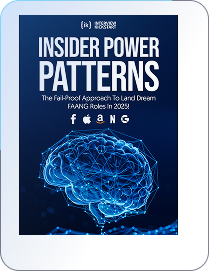Terraform is an open-source infrastructure as code or IaC tool created by HashiCorp. Terraform helps us build, change, and version cloud and on-prem resources efficiently and safely. We then have a consistent workflow to provision and manage our infrastructure throughout its lifecycle. This blog focuses on Terraform interview questions to help you get ready for your interview.
Here are some Terraform interview questions and answers to give you an idea of what to expect:
The core workflow of Terraform has three steps. The first is to write and includes creating infrastructure in code. The second is to plan and involves planning ahead of time to check how the changes may look before implementing them. Lastly, the third is to apply, which deals with creating a repeatable infrastructure.
Based on the needs and the situation, we can prevent Error Duplicate Resource in three ways. You can remove the duplicate resource from the configuration or manually delete it from the infrastructure. Otherwise, you could use the Terraform import command to import the existing resource into your state file, and Terraform will manage it without duplication. Alternatively, we can discard the resource from the APIs.
A .terraform directory is the result of running terraform init on a Terraform project. It serves as the local cache for several important components of Terraform.
Terraform needs these cached resources to work its way around managing and provisioning infrastructure without having to re-download so many dependencies. It is worth noting that the .terraform directory should not be under any version control system, such as Git. It can contain environment-specific data that is different between deployments.
Terraform easily integrates with a number of Version Control Systems that allow teams to manage changes through code reviews and collaboration. Currently, the list of supported VCS platforms includes but is not limited to GitHub, GitLab CE/EE, Bitbucket Cloud, and Azure DevOps.
Such integrations enable the use of features like automated pipelines applying Terraform configurations to track changes and maintain history. This way, Terraform Cloud or Terraform Enterprise could be configured to collaborate with VCS repositories in order to automatically make changes to the infrastructure during a pull request or merge.
A module in Terraform is a container for numerous resources that come in usage together. At the most basic level, every Terraform configuration could be considered a module. Modules in Terraform allow for code reusability, organization, and abstraction.
Your infrastructure should be fragmented into smaller, more self-contained modules. This helps you eliminate redundancy, ensure consistency, and manage the growing complexity.
A typical example would be to create a module responsible for managing a VPC that can then be reused across any number of other environments. You could source the modules from the Terraform Registry or local paths or version control, allowing for scalable infrastructure.
Here are some basic Terraform interview questions to get you started:
Next, check out these advanced Terraform interview questions to gauge your preparation level.
Lastly, make sure you can answer these technical interview questions before your Terraform interview:
You can use these Terraform interview questions to help you prepare better and to understand your level of preparedness. With Interview Kickstart you can fast track your interview prep, and nail any job interview.
Led by industry experts (from the likes of Google, Facebook, and LinkedIn), our instructors will help you build a strong foundation in the subject, and give you all the tools required to be successful in your career and land your dream job.
You can check out some of the success stories of our alumni who have advanced their careers with the help of Interview Kickstart.
Terraform creates an implementation plan and defines what it will need to do to attain the preferred state. It then executes the plan to construct the described infrastructure. Terraform checks what changed with configuration changes and generates practical and incremental execution plans.
Yes, we can have callbacks on Azure with Terraform with the help of the Azure Event Hubs.
Yes, we can utilize Terraform for on-prem infrastructure, and there are providers available to choose from.
We can use the command terraform -version to get the version of Terraform that’s running.
Ansible, Kubernetes, Packer, and Cloud Foundry are some key competitors of Terraform.
Related Reads:
Attend our free webinar to amp up your career and get the salary you deserve.

693+ FAANG insiders created a system so you don’t have to guess anymore!

100% Free — No credit card needed.

Time Zone:






Get your enrollment process started by registering for a Pre-enrollment Webinar with one of our Founders.

The 11 Neural “Power Patterns” For Solving Any FAANG Interview Problem 12.5X Faster Than 99.8% OF Applicants
The 2 “Magic Questions” That Reveal Whether You’re Good Enough To Receive A Lucrative Big Tech Offer
The “Instant Income Multiplier” That 2-3X’s Your Current Tech Salary

The 11 Neural “Power Patterns” For Solving Any FAANG Interview Problem 12.5X Faster Than 99.8% OF Applicants
The 2 “Magic Questions” That Reveal Whether You’re Good Enough To Receive A Lucrative Big Tech Offer
The “Instant Income Multiplier” That 2-3X’s Your Current Tech Salary
Just drop your name and email so we can send your Power Patterns PDF straight to your inbox. No Spam!
By sharing your contact details, you agree to our privacy policy.
Time Zone: Asia/Dhaka

We’ve sent the Power Patterns PDF to your inbox — it should arrive in the next 30 seconds.
📩 Can’t find it? Check your promotions or spam folder — and mark us as safe so you don’t miss future insights.
We’re hosting a private session where FAANG insiders walk through how they actually use these Power Patterns to crack interviews — and what sets top performers apart.
🎯 If you liked the PDF, you’ll love what we’re sharing next.
Time Zone:

